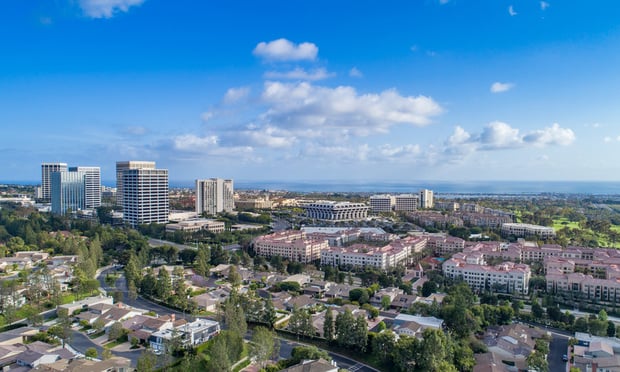Los Angeles, Santa Monica and San Francisco have already adapted to rent control regulations, but how will secondary markets cope with the state's new rent control law? According to Pat Jackson of Sabal Capital Partners, development in both primary and secondary submarkets in California should not be affected by the AB1482, the state's new rent control bill.
"It is a supply and demand issue. The reality is that if you don't have product in urban areas, you have to have supply pick up in other areas," Jackson, president and CEO of Sabal Capital Partners, tells GlobeSt.com. "If developers do not think that this measure is going to stifle new construction and the demand is in secondary and tertiary markets, then we are going to continue to see opportunity in those markets."
The rent control bill exempts new developments and gives a guideline for rent growth—assuming that other properties are increasing at the maximum 5% per year. "There is the issue of how the bill addresses the starting point of new rents. If the property is under 15 years old, it is exempt," says Jackson. "If a developer can bring a property to market and depend on 5% growth per year, they will pencil the project based on those number. If they work, the developer will build it, and the bill won't impact supply."
While new development won't be impacted, rehab projects will. "The concerning part is not for new construction. It is the rehab of older construction," says Jackson. "Those projects are the lion's share of how we are solving this affordable housing issue. I don't know the answer yet to how those projects will be affected. That is the area of supply that I think is really important, and we don't want to stop those rehab projects. We want to be able to have older stock rehabbed and brought back into the market."
While investors will have to navigate the new regulation, lenders, like Sabal Capital, say that it won't change their ability to lend on properties. That is because, since the recession, most lenders underwrite to the current market, not future projections. "If you are making pro-forma assumptions over the long term, then you are making some assumptions that you are not meeting today's lending standards. I own the first loss, and I want to know that the day I buy that bond, those loans are performing and have sufficient cash flow to meet the mortgage terms," says Jackson. "If you look back at what happened in 2005, 2006, 2007, a lot of people were underwriting loans with the assumption that rents would grow over the next five years. But, what happens when you don't get there? A lot of changes have been made in the industry to alleviate those concerns so that we have loans on day one that meet those standards. That is how we operate, and that is why I am not concerned as a lender."
Want to continue reading?
Become a Free ALM Digital Reader.
Once you are an ALM Digital Member, you’ll receive:
- Breaking commercial real estate news and analysis, on-site and via our newsletters and custom alerts
- Educational webcasts, white papers, and ebooks from industry thought leaders
- Critical coverage of the property casualty insurance and financial advisory markets on our other ALM sites, PropertyCasualty360 and ThinkAdvisor
Already have an account? Sign In Now
*May exclude premium content© 2024 ALM Global, LLC, All Rights Reserved. Request academic re-use from www.copyright.com. All other uses, submit a request to [email protected]. For more information visit Asset & Logo Licensing.









